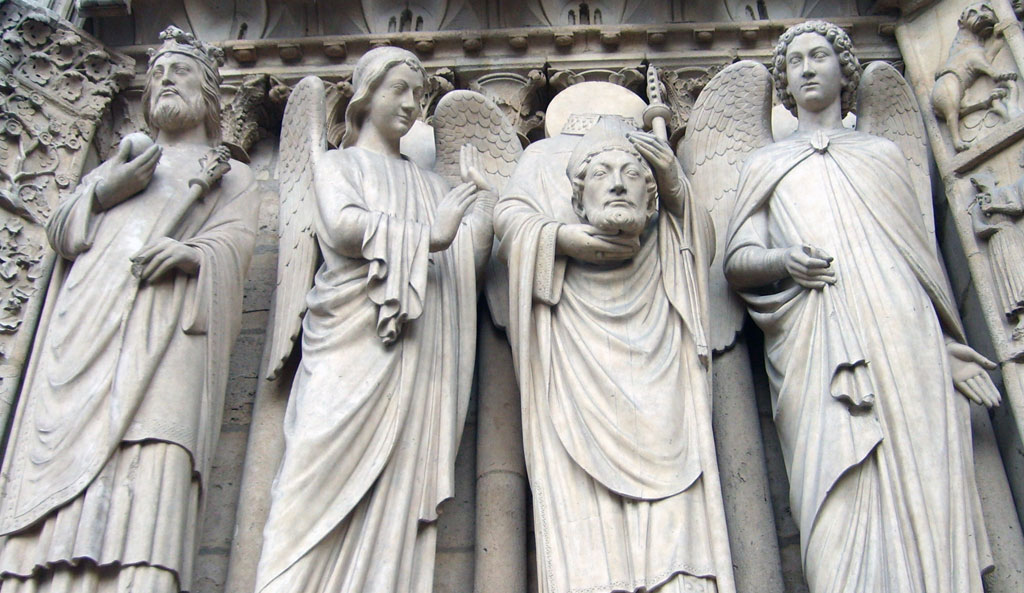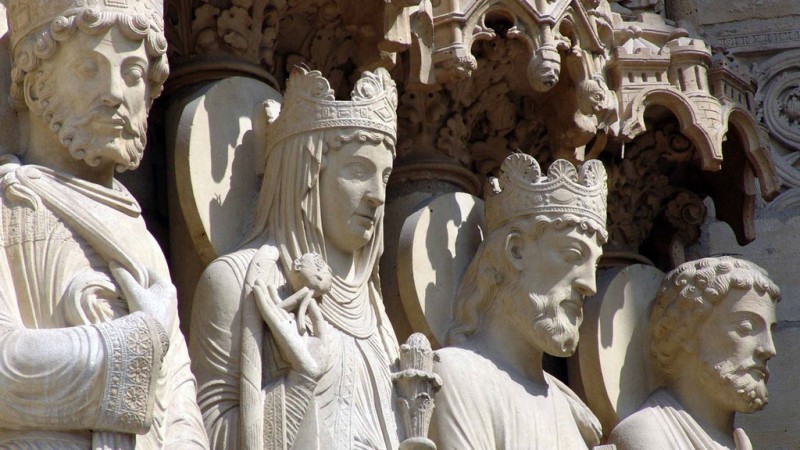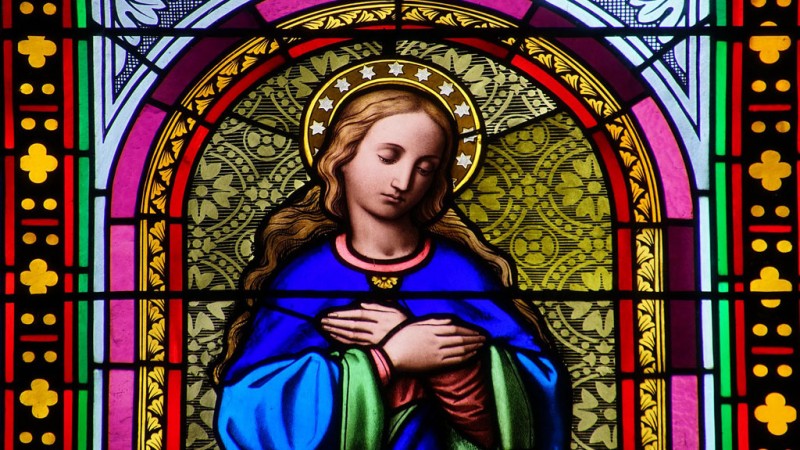
In this Random Nun Clip, a listener named after Saint Lucy wonders why images of saints are so startling. Hear the full Ask Sister podcast at AS186.
SISTER JULIE: A question comes in from Lucinda. Hi sisters! My mom and dad named me after St. Lucy. When I looked her up on the internet, it was really weird. There were pictures where she is holding her eyes on a plate. Ewww! I looked up a bunch of other saints too, mostly the same thing. If God’s on their side, why were their lives so terrible?
SISTER MAXINE: Thank you very much, Lucinda, for the question. It is true when you look at saint imagery, there are often some gruesome depictions. You think of Stephen
SISTER JULIE: Oh, Sebastian
SISTER MAXINE: Sebastian
SISTER JULIE: Joan of Arc
SISTER MAXINE: Yeah, yeah, a lot of gruesome stuff out there.
SISTER JULIE: Yes
SISTER MAXINE: So why would these holy people be depicted, especially the early church martyrs, be depicted this way?
SISTER JULIE: I think the key thing you mentioned is the word martyrs. St. Lucy was a martyr of the Church. In the very early church, many, if not most of our saints, were martyrs because the church was under persecution at the time.
SISTER MAXINE: In the Roman Empire, the first through the third centuries, the Roman Empire was not too fond of these new believers, but for good reason. One was, they thought that this was a superstition. They had a lot of Roman gods and so they thought this new one was kind of a superstition. Probably a more important reason was if people didn’t pray to the Roman gods, that the gods would become displeased and then there would be droughts, there would be floods and all sorts of things because of course, the Roman gods, there was divine retribution there.
SISTER JULIE: Do you think the Romans also were a little bit like, well at the time there wasn’t exactly separation of church and state, so if you didn’t follow the gods then the Romans might have their authority questioned?
SISTER MAXINE: That was very true; everybody was encouraged to worship the Roman gods so you see these so-called Christians and it was a concern in many parts of the empire. From the first through the third century is when most of that happened and then of course, with Constantine and the Edict of Milan in 313—gotta love that church history (laugh)
SISTER JULIE: Hashtag history nun
SISTER MAXINE: that’s when the persecution, the official state persecution, came to an end. Of course, Constantine was a convert to Christianity.
SISTER JULIE: For the early Christians, there were so many who were fervent in their faith. They had this awesome experience of Jesus Christ, whether in person or through the Holy Spirit, and the growing of the beginnings of the early church. They had this awesome experience of God and so even though Christianity was persecuted religion, people were standing up for their faith and were killed. They became martyrs and so the Christian community raised them up as models of people who were willing to give their life and their death to Jesus the Christ.
SISTER MAXINE: The depictions often involve what we would think of as superhuman strength or superhuman power as a source of encouragement to people whose faith was tested, who encountered extreme difficulty in life. They can be models for us today as well. We may not be accustomed to the gruesome depictions in understanding how they died, but I think back in the day especially, that was really significant and it could be a teaching tool.
SISTER JULIE: I think in many ways it was because I have to say, out of all the saints, I definitely do remember the gruesome ones because I can image them so clearly. We know from even Lucinda’s description of her patron saint, we have a pretty good idea of how she died.
SISTER MAXINE: So Saint Lucy was from a wealthy family and probably stood to inherit some considerable money. She was betrothed to a pagan man, a young man and against her wishes, she wanted to just consecrate her whole entire life to God. So, when she began to basically give away all of her wealth, there was a lot of discontent. Given what her beliefs were, that she was acting on them, she came to a very unfortunate ending, part of which involved her having her eyes taken out. It is gruesome but again here you see somebody whose depiction is meant to show that she was willing to stand up for her faith and that she had God’s graces to help her in this time of extreme struggle.
SISTER JULIE: The depictions are also very interesting because you don’t see a woman who is dead with her eyeballs on the side of her, for lack of a better phrase to describe that, you see this strong woman standing up of her own agency, with a plate with her eyes on it. There is such strength in this imagery. You see that in many others. I love in the chat room, Julia’s example of Saint Denis of Paris, who picked up his head after being beheaded, and walk for seven kilometers before dying. You see this strength that the saints had that these images were able to connote and I think that says something very powerful about these people that we are modeling our lives after. They weren’t overcome if you will, they actually triumphed in their death.
SISTER MAXINE: And it was a spiritual triumph. The body may be what it ends up being but it is their spiritual, their inner spiritual strength, that allows them to do these things.
To hear full episodes of A Nun’s Life podcasts, visit the podcast page.















